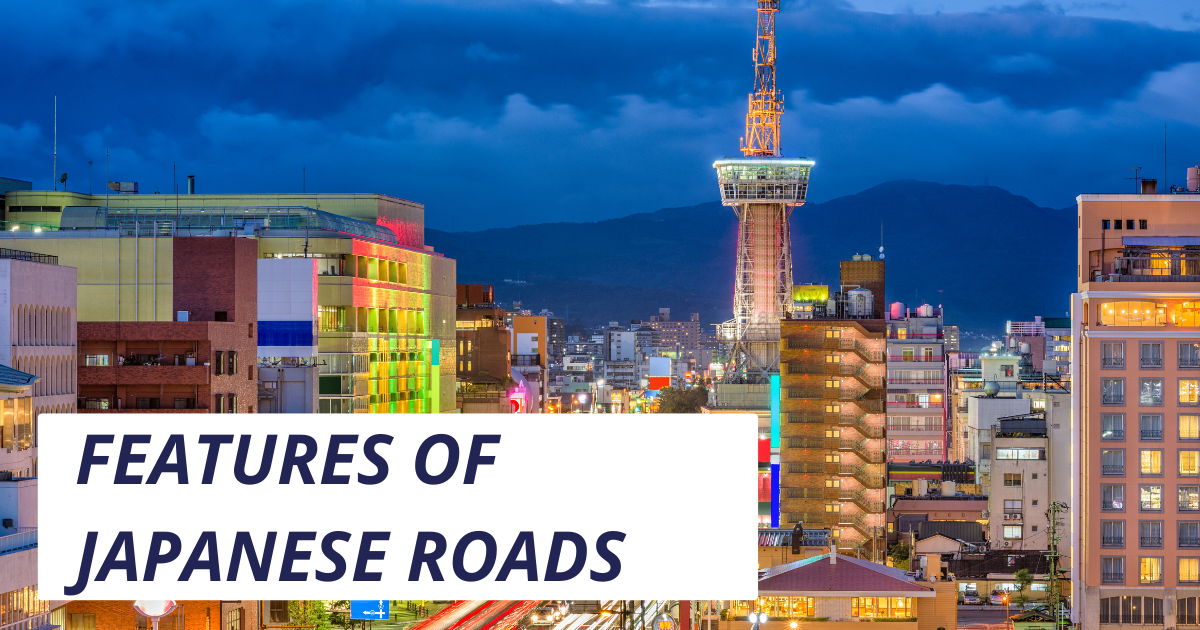Japan has many roads, and it is sometimes said that there is no need for more roads. However, when compared to the rest of the world, Japan’s road environment is not only “good” but also has features that are unusual from a global perspective. In this article, we will explain the characteristics of roads around the world and in Japan.
Contents
- ① High quality of road surface
- ② There are many roads in a small country.
- ③ Narrow road width
- ④ Fewer lanes
- ⑤ Many 2 lane roads are vulnerable to disasters
- ⑥ Low level of integrated road infrastructure
- ⑦ Relatively low speed limit
- Although narrow, Japanese roads are superior to those of other countries in terms of quality!
① High quality of road surface
More than 90% of road pavements in Japan are asphalt pavements. Asphalt pavement is softer than concrete pavement, making it smoother and quieter to drive on and quieter than concrete pavement. It also hardens in about 3 hours, allowing the road to be completed quickly. Concrete pavement takes longer to harden, but it requires less maintenance, and some roads have not been repaired for 50 years.
On the other hand, asphalt pavement has a short service life of 10 years and requires repair work. In Japan, however, repair work is frequently performed to ensure that the road surface is always clean and flat. The quality of the road surface is very high because of the many opportunities for maintenance. Asphalt can also be paved with drainage pavement, which improves drainage, so unlike concrete pavement, puddles are less likely to form, making the road easier to drive on.
② There are many roads in a small country.
Japan ranks 14th in the world in terms of road density.[1] The land area of Japan is approximately 378,000 square kilometers, although it is the 61st largest in the world, roads run through the country like blood vessels.
One of the reasons for the large number of roads is that Japan focused on the maintenance and extension of railroads in the Meiji era, but after the end of World War II, it has been focusing on the maintenance of roads. In addition, highway maintenance was extended from the 1960s to 2000. In order to meet the drastically increasing traffic demand after the war and to promote road maintenance as soon as possible, it was necessary to raise financial resources other than general funds, which led to the establishment of the specific financial resources system and the toll road system. Thanks to these financial resources, Japan’s roads developed.
③ Narrow road width
The road width in Japan is defined as 3.5m. In the U.S., the width is 3.66m, and in Germany and France it is 3.75m. Road widths in Japan are narrower than in the rest of the world. Some small roads in Japan are even narrower at 2.75 to 3 meters. Also, the shoulder is the space to the left of the roadway where the sidewalk meets the roadway and serves to protect the roadway structure and provide a waiting area for broken-down vehicles.
The width of the shoulder is set at 0.5 to 2.5 meters, which makes the road seem even narrower. When you come from overseas and drive in Japan, you may feel that the roads are narrow because Japanese roads are actually set to be narrow.
④ Fewer lanes
Regarding the number of lanes on high standard roads, Japan has about 27% of its roads with 3 lanes or less. About 65% have 4 to 5 lanes, and only 8% have 6 or more lanes. Looking at overseas examples, in the United Kingdom, approximately 3% have 3 or fewer lanes, 27% have 4 to 5 lanes, and 70% have 6 or more lanes.
If we look at neighboring South Korea as a reference, approximately 5% of roads have 3 or fewer lanes, 71% have 4 to 5 lanes, and 24% have 6 or more lanes. Compared to other countries, Japan has more roads with 3 lanes or less and fewer roads with 6 or more lanes.[2]
⑤ Many 2 lane roads are vulnerable to disasters
As mentioned earlier, Japan has many roads with few lanes. On 2 lane roads, it is difficult to overtake. As a result, cars with lower speeds dominate the flow of traffic, causing traffic to slow down.
In other countries, many roads have four or more lanes, which allows for more and more passing, and the flow of traffic is less slowed down. Also, because 2 lane roads do not allow overtaking, emergency vehicles cannot move quickly, and ambulances carrying patients cannot move smoothly sometimes. Furthermore, roads are closed for long periods of time during accidents, earthquakes, and other disasters, requiring time for restoration. Japanese roads have few lanes, making them vulnerable in times of disaster.
⑥ Low level of integrated road infrastructure
One of the characteristics of Japanese roads is the small number of lanes, which is caused by the low level of integrated road infrastructure. Japanese expressways are built with the goal of connecting regions, and there is a history of cutting costs and building roads with two lanes where four lanes should normally be built.
This is the reason why many Japanese expressways are 2 lanes. Also, the discontinuity of the network may prevent smooth travel to the destination. It also seems to be related to the fatality rate in the event of an accident. The fatal accident rate on 2-lane highways is twice as high as on 4-lane sections. The low level of integrated road infrastructure makes many roads more dangerous than in other countries.
⑦ Relatively low speed limit
Roads connecting major cities in Japan, the average travel speed is 60 km/h. Compared to the speed limits in foreign countries, in Germany is 95 km/h, in France is 96 km/h, and the United Kingdom is 80 km/h and tend to be higher respectively. Japan is characterized by relatively low speed limits. Looking at the speed of communication between cities, there are many parcels where the speed is less than 50 km/h. Looking between cities where the speed of travel on connecting roads is low, we can see that the arterial roads are short.
Japan is characterized by mountains and roads that cannot be straightened, so legal speed limits tend to be set low because it is dangerous to drive too fast on winding roads. The New Tomei Expressway has a new 120 km/h speed limit zone, and in some places the legal speed limit has been raised. However, on average, the speed limit in Japan is lower than in other countries.
Although narrow, Japanese roads are superior to those of other countries in terms of quality!
We have described the characteristics of Japanese roads when compared to those of foreign countries. Although Japan has some disadvantages such as narrow roads and fewer lanes, it also has the advantage of high-quality roads. Especially in Japan, where asphalt pavement is common, the roads are smooth and free of holes, although regular maintenance is required. Also, the speed of road restoration in Japan is remarkable, as evidenced by the fact that roads devastated by the Great East Japan Earthquake in 2011 were restored in only 6 days.
Japanese roads are characterized by being narrow and having only a few lanes, though, However, the quality of road surfaces remains at a high level, and many visitors from other countries seem to find them easy to drive on. Although there are many issues to be addressed, Japan has some aspects of good road quality that are not inferior to those of foreign countries.


